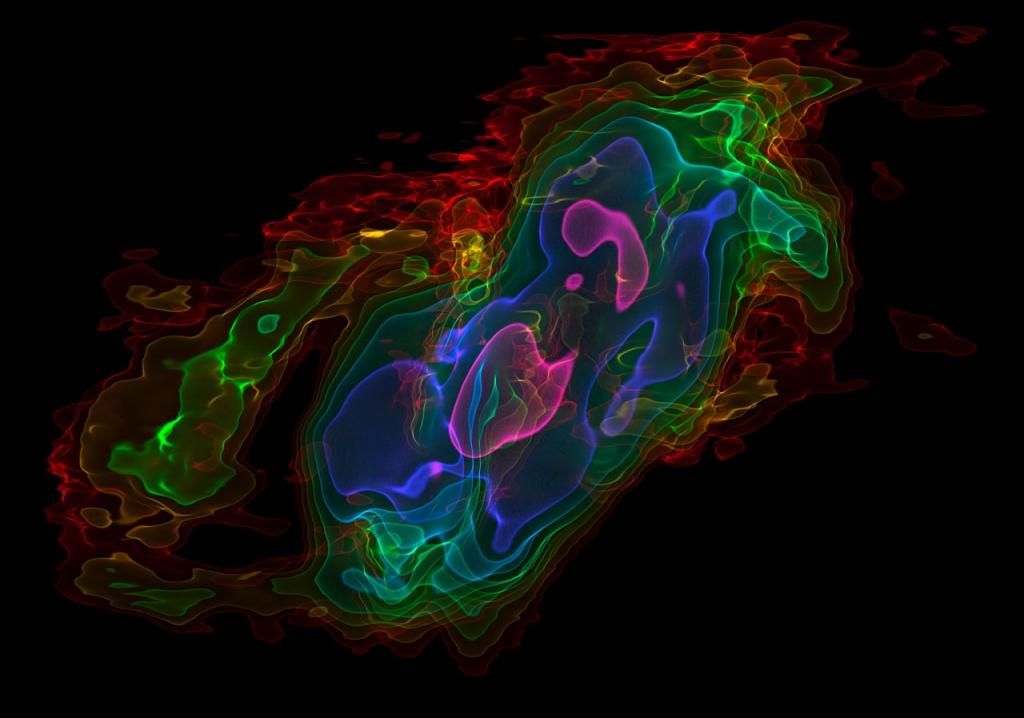Welcome to DU!
The truly grassroots left-of-center political community where regular people, not algorithms, drive the discussions and set the standards.
Join the community:
Create a free account
Support DU (and get rid of ads!):
Become a Star Member
Latest Breaking News
General Discussion
The DU Lounge
All Forums
Issue Forums
Culture Forums
Alliance Forums
Region Forums
Support Forums
Help & Search
General Discussion
Related: Editorials & Other Articles, Issue Forums, Alliance Forums, Region ForumsALMA Sheds Light on Mystery of Missing Massive Galaxies
http://www.eso.org/public/news/eso1334/[URL=
 .html]
.html]
ALMA Sheds Light on Mystery of Missing Massive Galaxies
24 July 2013
New observations from the ALMA telescope in Chile have given astronomers the best view yet of how vigorous star formation can blast gas out of a galaxy and starve future generations of stars of the fuel they need to form and grow. The dramatic images show enormous outflows of molecular gas ejected by star-forming regions in the nearby Sculptor Galaxy. These new results help to explain the strange paucity of very massive galaxies in the Universe. The study is published in the journal Nature on 25 July 2013.
Galaxies — systems like our own Milky Way that contain up to hundreds of billions of stars — are the basic building blocks of the cosmos. One ambitious goal of contemporary astronomy is to understand the ways in which galaxies grow and evolve, a key question being star formation: what determines the number of new stars that will form in a galaxy?
The Sculptor Galaxy, also known as NGC 253, is a spiral galaxy located in the southern constellation of Sculptor. At a distance of around 11.5 million light-years from our Solar System it is one of our closer intergalactic neighbours, and one of the closest starburst galaxies [1] visible from the southern hemisphere. Using the Atacama Large Millimeter/submillimeter Array (ALMA) astronomers have discovered billowing columns of cold, dense gas fleeing from the centre of the galactic disc.
“With ALMA’s superb resolution and sensitivity, we can clearly see for the first time massive concentrations of cold gas being jettisoned by expanding shells of intense pressure created by young stars,” said Alberto Bolatto of the University of Maryland, USA lead author of the paper. “The amount of gas we measure gives us very good evidence that some growing galaxies spew out more gas than they take in. We may be seeing a present-day example of a very common occurrence in the early Universe.”
[IMG]
 [/IMG][/URL]
[/IMG][/URL]
InfoView thread info, including edit history
TrashPut this thread in your Trash Can (My DU » Trash Can)
BookmarkAdd this thread to your Bookmarks (My DU » Bookmarks)
2 replies, 643 views
ShareGet links to this post and/or share on social media
AlertAlert this post for a rule violation
PowersThere are no powers you can use on this post
EditCannot edit other people's posts
ReplyReply to this post
EditCannot edit other people's posts
Rec (4)
ReplyReply to this post
2 replies
 = new reply since forum marked as read
Highlight:
NoneDon't highlight anything
5 newestHighlight 5 most recent replies
= new reply since forum marked as read
Highlight:
NoneDon't highlight anything
5 newestHighlight 5 most recent replies
ALMA Sheds Light on Mystery of Missing Massive Galaxies (Original Post)
G_j
Jul 2013
OP
intaglio
(8,170 posts)1. That is one cool picture n/t
Igel
(35,362 posts)2. A neighbor I had in Los Angeles was an astrophysicist grad student.
As a matter of course we left our doors open, like in a dorm.
Stopped by once on the way to class and he was ditzing with color schemes for a poster presentation. False-color images of CO2 concentrations in some nebula, IIRC.
Returned that evening, and while he had taken breaks, he was still ditzing with color schemes for the the same images for the same presentation. He had a range of options. "Which do you think looks coolest?"
In his space time he produced sci-fi landscapes of real planets, given what was known at the time, as well as hypothetical planets with made-up but possible properties.
Works, last I checked, as the outreach person for some space observatory.